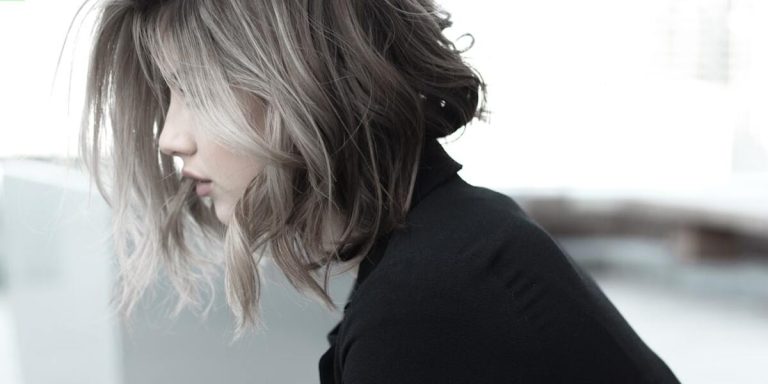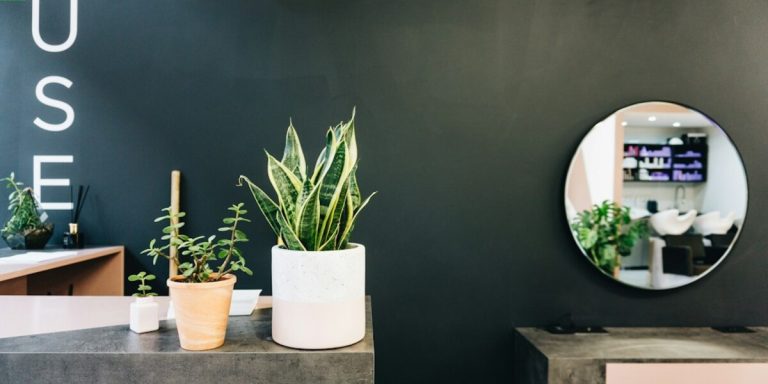Hair Loss After Keratin Treatment: Unveiling the Causes and Solutions
Imagine excitedly opting for a keratin treatment, dreaming of lustrous and smooth locks but instead ending up with unfortunate “hair loss after keratin treatment”. This scenario is far too common, causing distress to individuals worldwide. Many are unacquainted with the reality of this seemingly miraculous hair therapy – that while it can dramatically improve texture and manageability, it might also lead to dense strands in your brush or clogged shower drains.
While post-treatment hair thinning isn’t an inevitable aftermath for everyone who undergoes Keratin treatments, being informed about possible causes and solutions could make all the difference between enjoying beautiful tresses or battling unexpected bald patches. In today’s blog post we will explore how these popular procedures may instigate a nightmare cycle of shedding and what you can do to prevent or stop this unwanted side effect.
Did you know?
Contrary to popular belief, keratin treatments – known for smoothing and straightening hair – can ironically trigger hair loss. This is because improper application includes high heat that weakens the follicles, leading to thinning or falling strands.
Understanding Hair Loss After Keratin Treatment
Keratin treatments have grown tremendously in popularity over the past few years, owing to their amazing ability to tame frizz and add shine. However, some individuals may experience a rather unwanted side effect – hair loss post-treatment. It’s vital not just for those experiencing it but also for everyone getting this treatment or planning to get one soon, to understand why hair loss after keratin treatment occurs.
The primary cause behind this issue is typically related to improper application of the serum used in these procedures. When applied excessively or left on too long before being rinsed off properly, it can damage your scalp health significantly by clogging follicles which leads directly towards hair thinning and eventual shedding that follows with time.
Keratin treatments are usually safe under professional supervision, which should include a proper risk factor consultation. However, they can pose risks due to:
- Allergic reactions from chemicals in commercial products.
- Chemical burns from careless application.
This highlights the need to carefully consider all aspects of Hair Loss Treatments.
Identifying the Causes of Post-Keratin Treatment Hair Shedding
The causes behind hair loss following a keratin treatment can range from an improper application process to your body’s natural reactions. Let us delve into some of the most common reasons why you might be experiencing post-keratin treatment shedding.
Firstly, consider substandard or misused products. Many salons source inexpensive and potentially harmful keratin-based commodities that contain formaldehyde – a known carcinogen which on regular exposure could lead to hair breakage and loss. Therefore, always ensure your stylist uses high-quality keratin products free from noxious chemicals.
Secondly, over-processing may play culprit in this situation. Keratin treatments involve applying heat directly to your strands via flat ironing within the procedure; if overly done it leads to weakened follicles resulting in significant shedding once completed.
The Connection Between Chemical Treatments and Scalp Health
The connection between chemical treatments, like keratin treatments, and scalp health is undeniable. One of the first things to note about hair loss after a keratin treatment is that it’s not always due to the procedure itself. However, improper application or overuse can lead to damage.
Keratin therapy involves using chemicals on your locks for an extended period which could potentially trigger adverse reactions in some people. Chemicals are known to disrupt the natural pH balance of your scalp, making way for numerous complications including excessive shedding.
Scalp health plays a pivotal role in maintaining robust hair growth cycles, with each strand anchored securely by healthy follicles beneath our skin’s surface layer. When these follicle structures get disrupted by harsh chemicals from such intensive therapies; strands start losing their grip ultimately causing them to fall out prematurely.
Additionally, Keratin products often contain formaldehyde – a compound notorious for triggering allergic reactions resulting in redness, itching and even burning sensation on scalps leading again towards escalated levels of falling tresses post-treatment.
Another major factor contributing towards this issue might be thermal damage caused during these sessions where high temperature flat irons are used extensively further weakening strands at their roots thus promoting breakage and subsequent shedding when brushed or combed regularly later onwards.
1) The unbalanced pH levels from chemical substances pose as potential threats damaging valuable micro-structures within hair roots responsible chiefly for ensuring firm anchoring preventing unnecessary falls.
Effective Remedies for Hair Loss Following Keratin Procedures
Without a doubt, it is disheartening when you undergo an expensive keratin treatment with the hope of flaunting shiny, straight tresses only to find clumps of hair on your pillow later. While hair loss post-keratin procedure can be alarming, there are effective remedies that can rescue your mane from this distressing problem.
Firstly, stop panicking. Yes! Stress exacerbates hair fall and adds fuel to fire in these situations.
Invest time in understanding what went wrong before jumping onto conclusions or rushing for another chemical-loaded solution. Even though keratin treatments aim at smoothening frizzy strands by adding protein into the follicular cortex, they might not suit everyone due to varying scalp conditions and individual reactions towards chemicals used.
Natural Oils and Topical Applications to Combat Thinning
The use of certain oils has been known to stimulate hair growth as well as repair damage. They work by nourishing the scalp, improving blood circulation in your hair follicles which promotes regrowth.
Argan oil tops our list for its restorative properties – it’s rich in vitamins A & E along with essential fatty acids vital for keratin structure reinforcement . Just a couple drops massaged into your scalp thrice weekly could show significant results.
Similarly, Castor oil has high ricinoleic acid content; an omega-9 fatty acid aiding faster cell regeneration on application , benefitting those experiencing rapid thinning after their keratin treatment.
Coconut Oil also offers promising potential due to its lauric acid composition enabling deeper penetration into strands repairing both internal and external hair shaft layers .
Apart from these suggested oils, several other topical treatments exist too including Onion Juice application proven scientifically promoting increased levels of catalase enzyme assisting combat against hydrogen peroxide linked with ageing arcs such as graying or falling hairs .
Also noteworthy is Aloe Vera gel because phonetic compounds inside help healthful healing any damaged dermis around follicles leading bigger chances successful new cycles sprouting soon even if you’ve just finished a recent Keratine regime too harshly on your locks .
Supplementing with Vitamins and Minerals for Hair Regrowth
Unraveling the effects of hair loss after keratin treatment can be daunting. To counteract it, you need a well-formulated regimen brimming with vital vitamins and minerals that promote healthy hair growth.
Combat post-keratin procedure fallouts by replenishing your body’s nutrient stock. Consider these potent supplements for encouraging hair regrowth:
1. **Biotin** – Also known as vitamin B7 or H, biotin has long been lauded for its ability to thicken thinning strands by improving the keratin structure within every follicle.
2. **Vitamin D** – Deficiency in Vitamin D may lead to alopecia (hair loss). Include this crucial nutrient into your routine either through diet, sunlight exposure, or supplement intake.
Keratins, proteins essential to our hair’s infrastructure, play a crucial role. To mimic their benefits and combat treatment side effects like unexpected ‘shedding‘, incorporate high-quality protein-rich foods into your diet—think eggs and lean meats. These foods not only offer nutritional value but also support scalp health recovery efforts. Focusing on this is especially significant when protecting against damage from keratin-intensive processes.
Preventative Measures to Protect Against Future Hair Damage
Being aware of the potential risks associated with keratin treatments is the first vital step in safeguarding your hair against future damage. Recently, many individuals have reported instances of hair loss after undergoing a keratin treatment; this can be quite alarming and disconcerting.
Preventative measures should focus on reducing exposure to harmful chemicals typically present in these treatments. Opt for formaldehyde-free products as formaldehyde has been attributed to causing significant harm not just to your strands but also affecting overall health when frequently exposed at high levels. Always ensure that you’re using commendable quality products from trusted brands by checking their reviews online or consulting with a professional stylist before purchase.
It’s crucial never to over-process your hair, as it causes severe weakening over time which results in breakage and loss – remember moderation is key! Additionally, incorporate nourishing practices into your daily routine such as regular oil massages, adequate hydration intake and balanced diet – all play an instrumental role in maintaining scalp health hence promoting growth while preventing unnecessary shedding post-treatment.
In 2023 we see an increased awareness towards natural methods of protection reflecting rising trends within holistic approaches for beauty regimes worldwide. A transition toward organic ingredients could significantly reduce chemical-related hazards related directly or indirectly through various styling applications including Keratin Treatment.
Selecting Appropriate Keratin Treatments for Your Hair Type
With a surge in the popularity of keratin treatments for glossy, manageable hair, an unfortunate side effect has been noted – increased hair loss after treatment. This makes it essential to select appropriate keratin products based on your specific type of strands.
Keratin is a protein that forms the base structure of our hair, skin, and nails. Commercially available keratin treatments primarily work by replenishing this natural protein back into damaged or broken down follicles resulting in stunning locks with simplistic maintenance routines.
1. **Identify Your Hair Type**: Everyone’s tresses are different; some have thin silky threads while others possess thick voluminous cylinders. By correctly identifying whether you have dry, oily or mixed-type scalp can significantly help in choosing relevant products reducing chances of post-treatment damage.
2. **Understand Product Ingredients**: The market today is flooded with numerous brands offering diverse ranges but not all live up to their promises nor suit every individual’s needs perfectly.Education regarding harmful chemicals like formaldehyde present within them helps avoid unnecessary troubles later on.Seek those comprising gentle ingredients favoring healthier options which nourish without causing harm.
3. **Hydrate Regularly**: Hydration isn’t merely beneficial from inside- even your hairstyle benefits tremendously! As water-based molecules found naturally diminish over time due to heat exposure during styling activities leading often towards brittleness thereby enhancing propensity for breakage.It becomes important therefore ensuring adequately moisturized patches throughout life span specifically before & after opting such services .
Best Practices in Aftercare: Maintaining Healthy Locks Post-Treatment
Maintain healthy hair and prevent excessive hair loss after a keratin treatment by implementing effective aftercare measures. Follow these recommended best practices:
1. Properly Hydrate: Ensure you’re replenishing your locks with enough moisture daily, as dryness often leads to unnecessary breakage and subsequent loss.
2. Use Sulfate-free Shampoos: To prevent the stripping of natural oils from your scalp, opt for gentle sulfate-free shampoos that can help maintain the longevity of your keratin treatment while also reducing chances of hair fall.
3. Regular Protein Treatments: Keratin treatments involve heavy protein infusion into your strands which may lead to an imbalance over time; hence occasional protein-rich treatments like DIY egg or mayo masks could rebalance this scale and provide added protection against damage.
4. Massage Your Scalp Daily: This would stimulate blood flow in the scalp enhancing follicle health thereby curbing any potential threats leading to shedding post-keratin procedure.
5. Limit Heat Styling Tools: Excessive use of heat on treated tresses might leave them prone to breakage causing increased fallout so consider limiting their usage as much possible till you feel certain about strengthened regrowth stage.
Conclusion
In the grand scope of all things follicular, hair loss after keratin treatment is a concern that’s not to be tossed aside. Remember, knowledge is power – understanding why this happens and knowing how to prevent or address it can save you from unwarranted stress and unnecessary hair damage.
To ensure your mane stays as resplendent as ever post-treatment, equip yourself with the right information. For more invaluable insights on ‘Hair Loss Treatments’ don’t hesitate to explore around our website. There’s an abundance of wisdom just waiting for your click!







